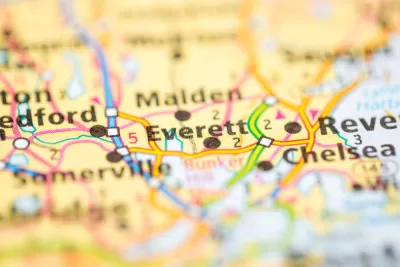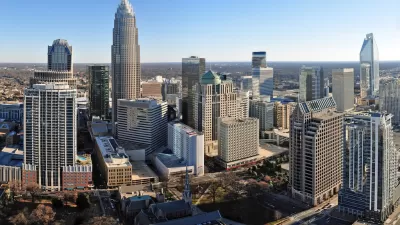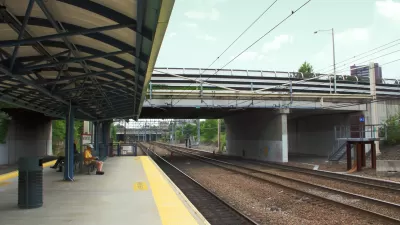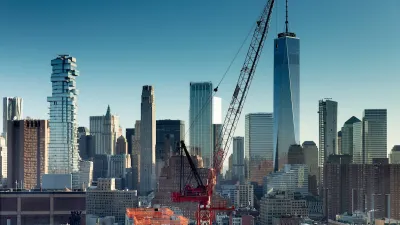To avoid the pitfalls of disconnected, car-centric suburbs, local governments must proactively plan for sustainable development in growing areas.

The area experiencing the most rapid growth in Massachusetts is, according to Amy Dain, "a place without an identity or united governance, a district that straddles the Mystic and Malden Rivers at the intersection of six cities: Everett, Medford, Somerville, Chelsea, Malden, and also a bit of Boston, at Charlestown." A proposed 21-story tower recently drew attention to the area for its outsized height. Since then, another two high-rise projects have been built or proposed. The region is "a natural hub between Boston-Cambridge-Somerville, the North Shore, and 128-North," an area primed for urban development with an existing "framework for connectivity" and surrounded by residential communities, employment centers, and amenities. "The six-city area is like a city center, for its density and mix of everything. Except it is not like a city center, at least not yet. For now it is an archipelago of private developments in need of the public connectivity so well known in historic downtowns."
With this growth, Dain argues, comes a need for "good government oversight and public investment" to ensure equitable, sustainable development. "Without public intervention, private developments will be primarily car-oriented, even when located near train stations, rivers, and rail trails." The same, Dain writes, goes for affordable housing and commercial real estate. "The market will not, on its own, deliver new buildings priced for low-income residents and scrappy entrepreneurs. It is the role of government to make sure that diversity gets built in when all-new city-centers rise." Dain asserts that local governments must emphasize "building for non-car mobility" which "takes so much more planning and coordination, across government bodies and parcels of land." As the region grows, "our shared task is not to build a series of gated-style, car-oriented developments, but to grow a resilient downtown for everyone."
FULL STORY: Building a city center serving six cities

Alabama: Trump Terminates Settlements for Black Communities Harmed By Raw Sewage
Trump deemed the landmark civil rights agreement “illegal DEI and environmental justice policy.”

Planetizen Federal Action Tracker
A weekly monitor of how Trump’s orders and actions are impacting planners and planning in America.

Why Should We Subsidize Public Transportation?
Many public transit agencies face financial stress due to rising costs, declining fare revenue, and declining subsidies. Transit advocates must provide a strong business case for increasing public transit funding.

Understanding Road Diets
An explainer from Momentum highlights the advantages of reducing vehicle lanes in favor of more bike, transit, and pedestrian infrastructure.

New California Law Regulates Warehouse Pollution
A new law tightens building and emissions regulations for large distribution warehouses to mitigate air pollution and traffic in surrounding communities.

Phoenix Announces Opening Date for Light Rail Extension
The South Central extension will connect South Phoenix to downtown and other major hubs starting on June 7.
Urban Design for Planners 1: Software Tools
This six-course series explores essential urban design concepts using open source software and equips planners with the tools they need to participate fully in the urban design process.
Planning for Universal Design
Learn the tools for implementing Universal Design in planning regulations.
Caltrans
Smith Gee Studio
Institute for Housing and Urban Development Studies (IHS)
City of Grandview
Harvard GSD Executive Education
Toledo-Lucas County Plan Commissions
Salt Lake City
NYU Wagner Graduate School of Public Service





























